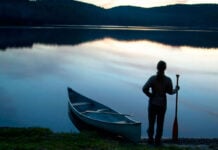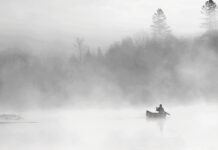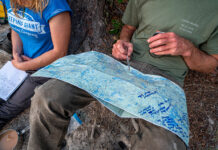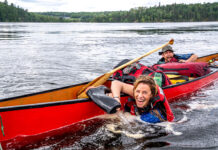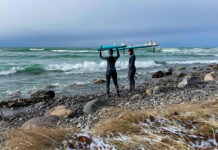Some people still think venturing off into wild places is a dangerous past-time. My 91-year-old grandmother is one of them.
Whether I’m out for a weekend or a week, she worries. After each canoe trip, she asks me the same series of questions: Did I see any bears? Did I see any snakes? What about eels? She is also typically concerned about whether or not I washed my hair. The answer to all of the above is usually, “No, Grandma.”
Growing up in the Great Depression, she’s from the era where folks were too busy trying to put bread on the table to go wilderness camping for fun. According to her, the only people who had adventures were either rich or retired. Thankfully, a lot has changed.
According to the Adventure Travel Trade Association, in 2013 the adventure tourism industry was valued at a whopping $263 billion worldwide.
That number is expected to grow by almost 50 percent by 2020. Traditional sun and sand or sightseeing holidays are losing ground to more adventurous activities, like canoeing.
Experiences that challenge and satiate the explorer within aren’t just for the rich and the restless anymore. In fact, Millennials, families and Baby Boomers make up some of the largest growing segments.
The idea of people spending years dreaming and saving up for a challenging and even occasionally uncomfortable vacation is a notion that would confound my grandma. Her last foray on the water with a single blade predates Gore-Tex, ripstop fabrics and Kevlar—who am I kidding, it predates aluminum—so I forgive her for being a little skeptical.
Wilderness tripping looks a whole lot different today than it did just a couple of decades ago. Instead of setting off with a route scrawled on the back of a bar napkin, the average tripper now carries a topographic map and location-broadcasting electronics—a smartphone, if not a GPS or satellite communicator.
Space-age technology and materials may lack a certain degree of coureur de bois mystique, but what they might offer is far more tangible and valuable. Safety and accessibility. For everyone. Even my grandmother.
It’s a good time to be an adventurous paddler. With just the click of a mouse, it’s easy to connect with outfitters, fellow paddlers, and even guidebook authors to get firsthand accounts and personal insights on routes.
It’s also easier than ever to find quality shops to buy or rent equipment or to find professional instruction. And thanks to social media and the Paddling Trip Guide, there’s no shortage of gorgeous images of watery locales to spur fantasies.
Whether you’re dreaming of a trip near or far, short or long, with your paddling mates or even with your grandmother, consider this a guidebook to your dreams.
Kaydi Pyette is the former editor of Canoeroots magazine.
Neither rich or retired. Just free. Feature Photo: Jay Kolsch



